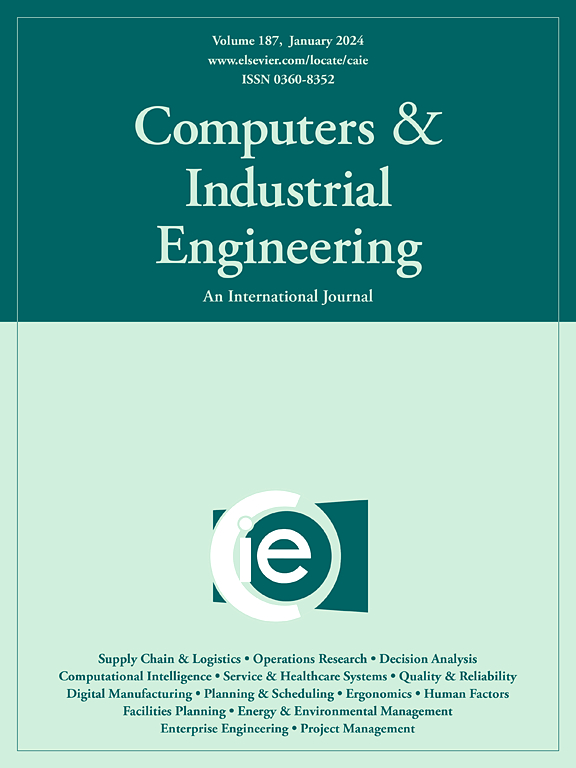基于多时间尺度数据融合网络的供应链需求预测
IF 6.5
1区 工程技术
Q1 COMPUTER SCIENCE, INTERDISCIPLINARY APPLICATIONS
引用次数: 0
摘要
需求预测在供应链管理中是至关重要的。然而,由于大规模制造的扩张,供应链变得越来越复杂和不确定。目前,主流的供应链需求预测方法主要依靠传统的统计模型或单一时间尺度模型,预测效果不理想。本文提出了一种新的供应链需求预测模型,该模型采用多时间尺度数据融合来提高预测性能。首先,构建了三个并行的时间卷积网络,从三个不同的时间尺度数据中提取特征信息。然后,利用自编码器和注意机制设计了一种特征融合方法。该方法通过自编码器对数据进行重构,统一了特征的时间维度,同时对特征进行了增强。然后利用注意机制自适应计算不同时间尺度的权重,并将重构数据与相应的权重相结合,得到包含不同时间尺度信息的特征。随后,该模型进一步使用时间卷积网络对融合数据进行映射,以获得最终的预测输出。最后,本文利用某大型家电制造商提供的数据对模型进行了验证,并将其与各种先进的时间序列预测模型进行了比较,证明了模型的优越性。烧蚀实验评估了多时间尺度模型输入和融合模块对预测结果的有效性和必要性,证实了多时间尺度数据输入和融合模块的优越性和必要性。本文章由计算机程序翻译,如有差异,请以英文原文为准。
Supply chain demand forecasting based on multi-time scale data fusion network
Demand forecasting is crucial in supply chain management. However, the supply chain has grown increasingly complex and uncertain due to the expansion of mass manufacturing. Presently, prevailing supply chain demand forecasting methods primarily rely on traditional statistical models or single time scale models, resulting in inadequate forecasting performance. This paper proposes a novel supply chain demand forecasting model that employs multi-time scale data fusion to enhance forecasting performance. Initially, three parallel temporal convolutional networks are constructed to extract feature information from three different time scales of data. Following that, a feature fusion method is devised utilizing autoencoders and attention mechanism. The method reconstructs data through autoencoders, unifying the time dimension of features while enhancing them. It then adaptively calculates weights for different time scales using an attention mechanism and combines the reconstructed data with corresponding weights to obtain features containing information from various time scales. Subsequently, the proposed model further maps the fused data using temporal convolutional networks to obtain the final prediction output. Finally, this paper validates the model using data provided by a major home appliance manufacturer and compares it with various advanced time series forecasting models, demonstrating the superiority of the proposed model. The ablation experiments assess the effectiveness and necessity of the multi-time scale model input and fusion module on forecast results, confirming the superiority and necessity of the multi-time scale data input and fusion module.
求助全文
通过发布文献求助,成功后即可免费获取论文全文。
去求助
来源期刊

Computers & Industrial Engineering
工程技术-工程:工业
CiteScore
12.70
自引率
12.70%
发文量
794
审稿时长
10.6 months
期刊介绍:
Computers & Industrial Engineering (CAIE) is dedicated to researchers, educators, and practitioners in industrial engineering and related fields. Pioneering the integration of computers in research, education, and practice, industrial engineering has evolved to make computers and electronic communication integral to its domain. CAIE publishes original contributions focusing on the development of novel computerized methodologies to address industrial engineering problems. It also highlights the applications of these methodologies to issues within the broader industrial engineering and associated communities. The journal actively encourages submissions that push the boundaries of fundamental theories and concepts in industrial engineering techniques.
 求助内容:
求助内容: 应助结果提醒方式:
应助结果提醒方式:


